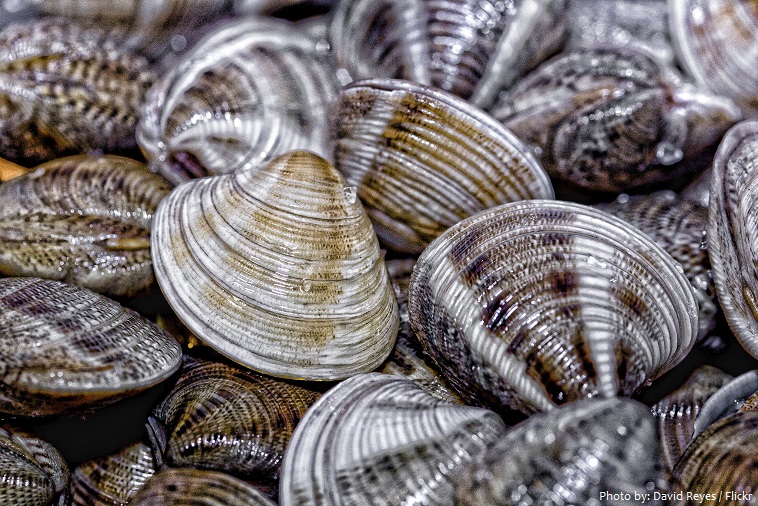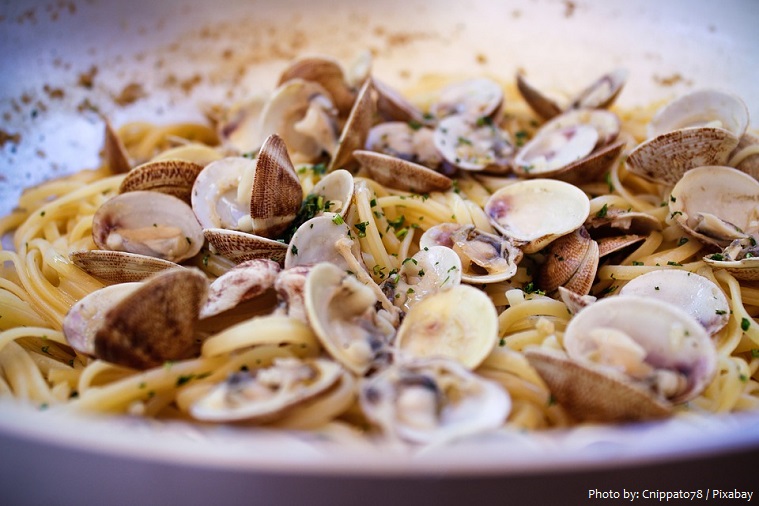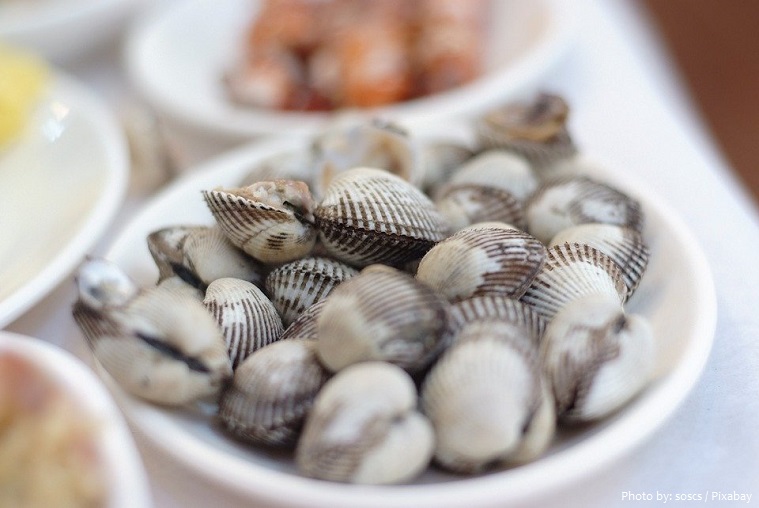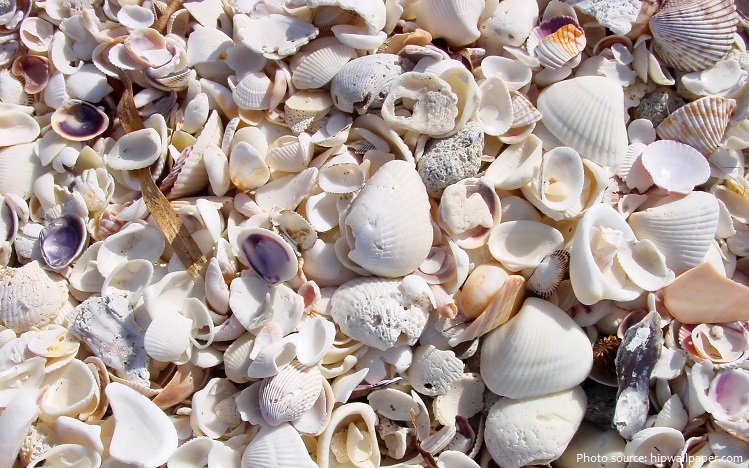
Clam is a common name for several kinds of bivalve molluscs.
The word is often applied only to those that are edible and live as infauna, spending most of their lives halfway buried in the sand of the seafloor or riverbeds.
All clams have two calcareous shells or valves joined near a hinge with a flexible ligament and all are filter feeders. They also have kidneys, a heart, a mouth, a stomach, and a nervous system.
The size of clams ranges from 0.1 mm (0.004 inch) in Condylocardia to 1.2 metres (4 feet) across in the giant clam (Tridacna gigas) of the Pacific and Indian oceans.

Clams characteristically lie buried from just beneath the surface to depths of about 0.6 metre (2 feet). They rarely travel over the bottom as do some other bivalves. Most clams inhabit shallow waters, in which they are generally protected from wave action by the surrounding bottom. One species of abra clam (Abra profundorum), however, has been taken in the Pacific Ocean at a depth of more than 4,800 metres (16,000 feet).
Some clams have life cycles of only one year, while at least one may be over 500 years old.
Clams live in both freshwater and marine environments – in salt water they prefer to burrow down into the mud and the turbidity of the water required varies with species and location – the greatest diversity of these is in North America.

They eat plankton, and are eaten by small sharks, squid and many species of fish.
Clams in the culinary sense do not live attached to a substrate (whereas oysters and mussels do) and do not live near the bottom (whereas scallops do).
In culinary usage, clams are commonly eaten marine bivalves, as in clam digging and the resulting soup, clam chowder.

Within the eastern coast of the United States and large swathes of the Maritimes of Canada, the term “clam” most often refers to the hard clam (Mercenaria mercenaria). It may also refer to a few other common edible species, such as the soft-shell clam, Mya arenaria and the ocean quahog (Arctica islandica). Another species commercially exploited on the Atlantic Coast of the United States is the surf clam Spisula solidissima.
Staple favourites of the British public and local scavengers would include the razorfish, Ensis siliqua, a slightly smaller cousin of the bamboo clam of Eastern North America.
In Italy, clams are often an ingredient of mixed seafood dishes or are eaten together with pasta. The more commonly used varieties of clams in Italian cooking are the Vongola (Venerupis decussata), the Cozza (Mytilus galloprovincialis) and the Tellina (Donax trunculus).

In Japan, clams are often an ingredient of mixed seafood dishes. They can also be made into hot pot, miso soup or Tsukudani. The more commonly used varieties of clams in Japanese cooking are the Shijimi (Corbicula japonica), the Asari (Venerupis philippinarum) and the Hamaguri (Meretrix lusoria).
China is the largest producer of clams.
In fish markets, there are specialist names for different sizes of the hard clam. The smallest legally harvestable clams are called countnecks or peanuts, next size up are littlenecks, then topnecks. Above that are the cherrystones, and the largest are called quahogs or chowder clams.

Many edible clams such as palourde clams are oval or triangular – however, razor clams have an elongated parallel-sided shell, suggesting an old-fashioned straight razor.
Clams can be eaten raw, steamed, boiled, baked or fried. They can also be made into clam chowder, clams casino, Clam cakes, stuffies, or they can be cooked using hot rocks and seaweed in a New England clam bake. On the West Coast, they are an ingredient in making cioppino and local variants of
ceviche.
Clams tend to be an exceptionally rich source of vitamin B12 and a good source of protein and niacin.
Some species of clams, particularly Mercenaria mercenaria, were in the past used by the Algonquians of Eastern North America to manufacture wampum, a type of sacred jewellery – and to make shell money.

The longest-lived, non-colonial animal ever discovered is a quahog clam (Arctica islandica), which had been living on the seabed off the north coast of Iceland until it was dredged by researchers from Bangor University’s School of Ocean Sciences, Wales, UK in 2006. On 28 October 2007,
Sclerochronologists from Bangor initially announced that they had studied the annual growth rings in the shell and determined the clam to be between 405 and 410 years old. However, in November 2013, using more sophisticated measuring techniques, they revised this figure up to an extraordinary 507 years. The clam was nick-named “Ming” after the Chinese dynasty in power when the clam was born!
A living freshwater clam can work like a filter in fish tanks to keep the water clean.
They also are popular motifs in art work.